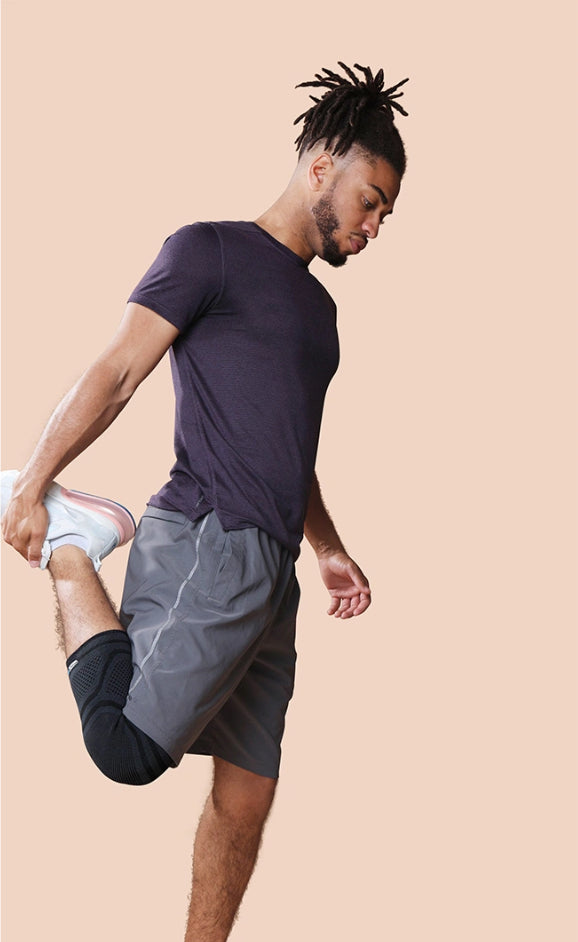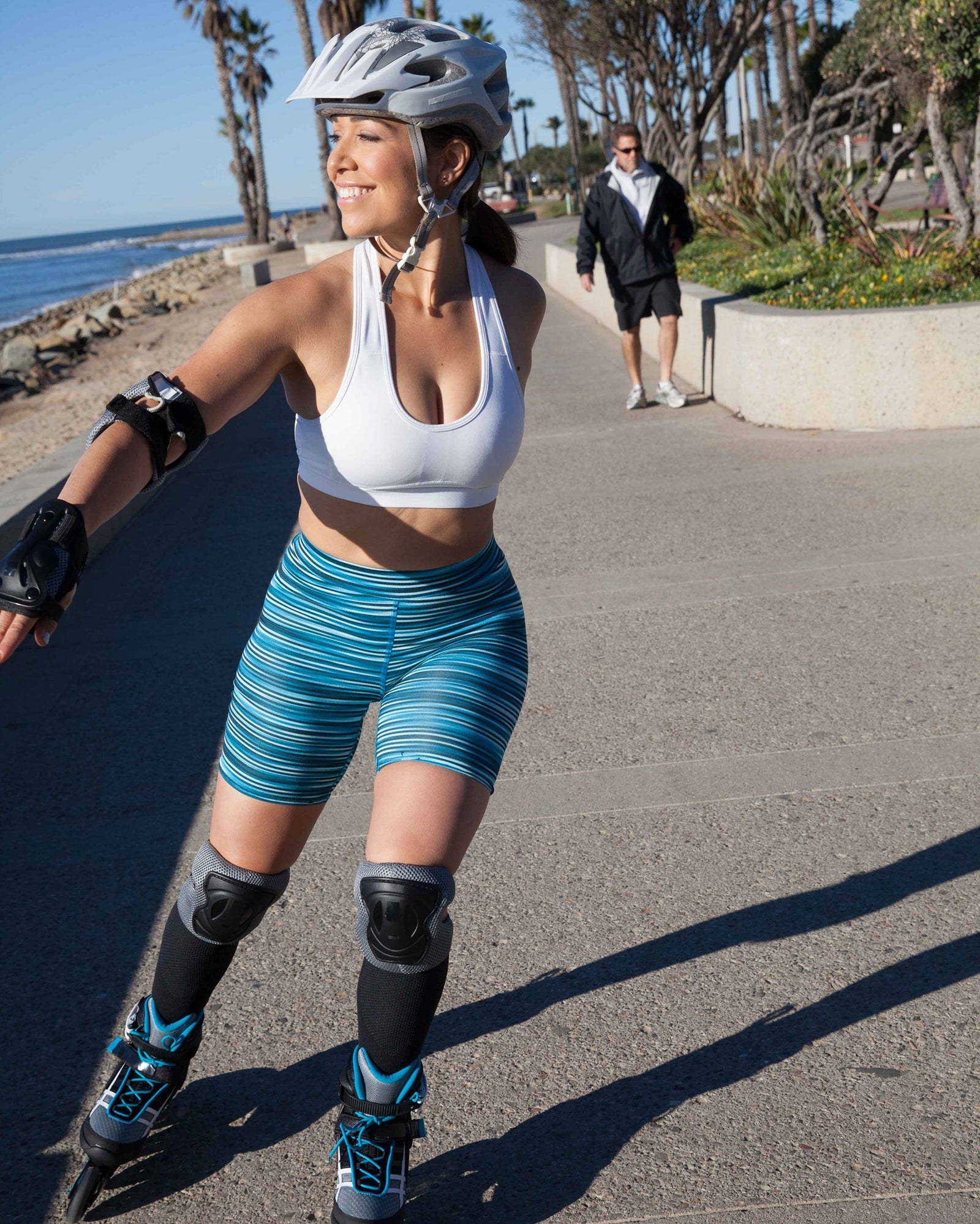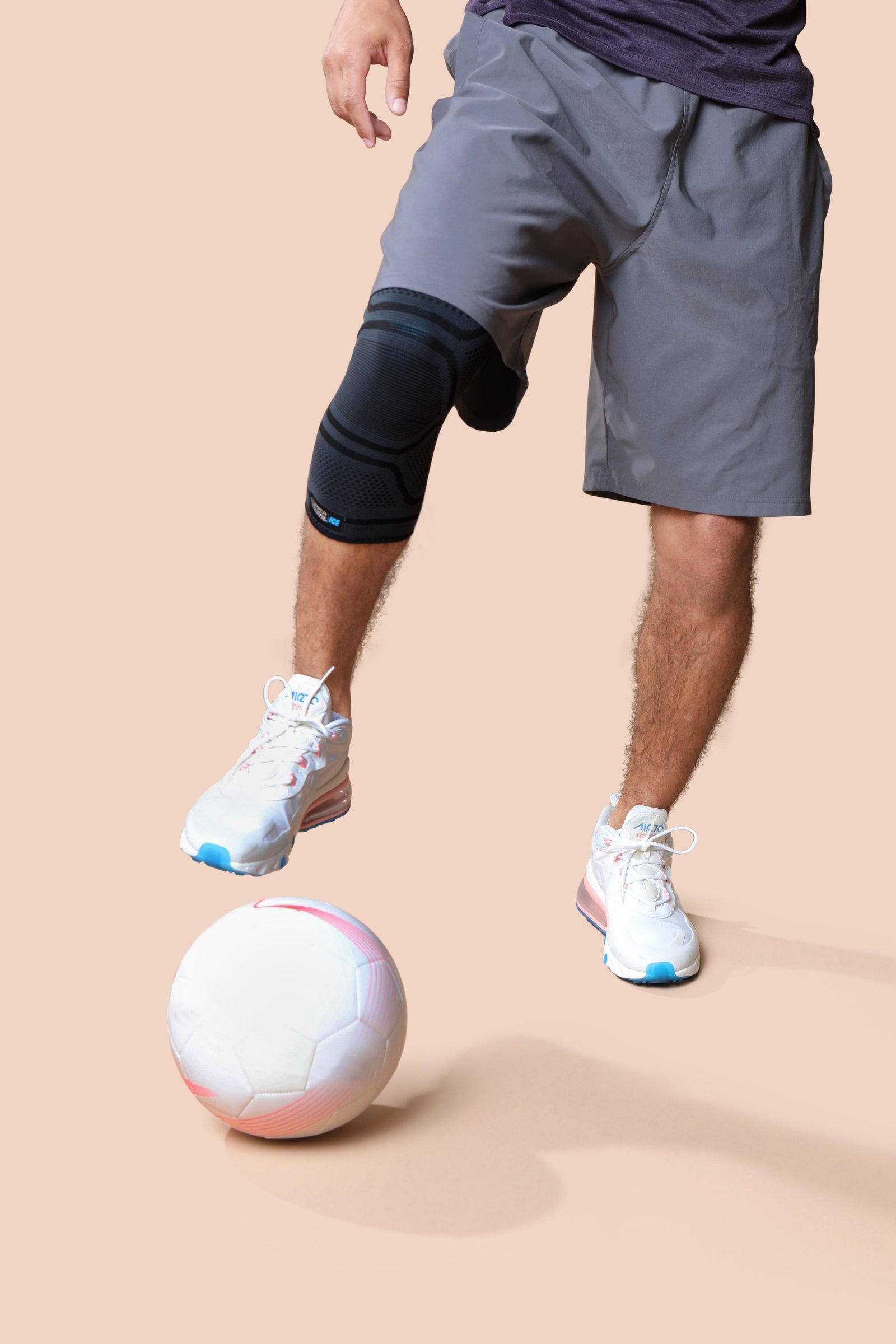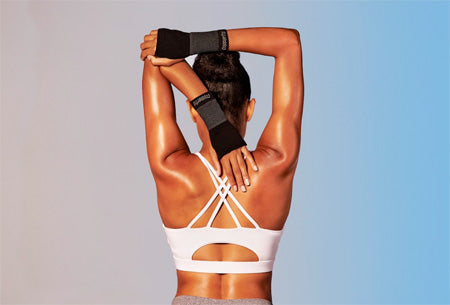
Your ankles are involved in almost every step, jump, squat, or pivot you make—whether you're chasing personal bests or just getting through a busy day on your feet. They’re small but mighty joints that carry a lot of responsibility, and when they feel sore, tight, or unstable, it doesn’t just slow you down—it can throw off your whole routine.
The good news? There are practical, science-backed ways to strengthen your ankles and support your long-term mobility.
Whether you’ve dealt with ankle soreness before or just want to stay ahead of potential issues, you’re in the right place. This guide breaks it all down—offering movement strategies that work with your body, not against it.
What Is the Role of the Ankle Joint in Movement?
Let’s start with the basics. Your ankle joint connects your foot to your lower leg. It’s made up of bones (like the tibia, fibula, and talus), surrounded by muscles, tendons, and ligaments that work together to provide support and range of motion.
Every time you walk, run, or shift your weight, your ankles are managing load, absorbing shock, and helping you stay balanced. They need to be both strong and mobile to function well.
When something’s off—like muscle weakness, tightness, or poor alignment—it can lead to tension and soreness not just in the ankles, but throughout your legs, knees, and hips. That’s why ankle support isn’t just about one joint. It’s about total-body movement patterns and building a solid foundation you can count on.
Signs Your Ankles Could Use More Support
Not sure if your ankles are asking for help? Here are a few common signals:
- Your ankles feel sore or tired after activity
- You’ve rolled or twisted your ankle more than once
- You notice stiffness when you first get up or after sitting for a while
- Balancing on one leg feels awkward or shaky
- Recovery from activity takes longer than expected
These signs don’t mean something’s “wrong”—they just mean it might be time to pay closer attention. The earlier you build supportive habits, the easier it is to stay active and avoid long-term setbacks.
Everyday Habits That Strengthen Your Ankles
Strong ankles don’t just come from the gym—they come from what you do consistently, day after day.
Here are a few habits to consider if you aren’t doing them already:
1. Move With Intention
Get in the habit of activating your feet and ankles when you walk or work out. Press evenly through your whole foot. Pay attention to how your ankles align with your knees and hips during movement. The more aware you are, the more control and stability you’ll build.
2. Stand Barefoot (When Safe)
At home, going barefoot (on safe, supportive surfaces) can help strengthen small stabilizing muscles that shoes don’t engage. Think of this as low-effort training that adds up over time.
3. Balance More Often
Simple acts like standing on one leg while brushing your teeth or doing single-leg exercises at the gym help activate your ankle stabilizers. Over time, this improves balance and builds strength without adding stress.
4. Keep Moving
Sedentary days can lead to stiffness and reduced circulation. Taking regular walking breaks, stretching your calves, or doing ankle rolls throughout the day helps keep things fluid and tension-free.
Best Exercises To Build Ankle Strength
Building stronger ankles doesn’t mean hours of high-impact training. It’s about consistent, targeted movements that activate and support the muscles surrounding the joint. These exercises are beginner-friendly but effective enough to benefit seasoned athletes, too.
1. Ankle Flexion With Resistance Bands
Secure a resistance band around the ball of your foot and slowly flex and point your toes. This targets the front and back of the ankle, improving mobility and strength. Aim for 2-3 sets of 10-15 reps per foot.
2. Heel Raises and Toe Walks
Stand tall and lift your heels slowly, pausing at the top before lowering. Try walking on your toes for short sets to strengthen the calf and ankle stabilizers. These movements are simple but powerful when done consistently.
3. Ankle Circles and Alphabet Drills
Whether seated or lying down, move your foot in controlled circles or trace the alphabet with your toes. These improve mobility, especially after long periods of sitting or activity.
4. Single-Leg Balance Work
Practice standing on one foot for 30 seconds at a time. Once that feels solid, try it on an unstable surface like a cushion or folded towel. This challenges your proprioception—your body’s ability to sense where it is in space—and builds deep ankle stability.
5. Jump Rope (Advanced)
Light jumping activates fast-twitch muscle fibers and challenges your ankle's responsiveness. Start slow and land softly. This is ideal for more experienced athletes or those ready to progress.
How Can I Keep My Ankles Feeling Their Best?
Recovery is a key part of any training plan. While it’s easy to focus on the workout itself, what you do afterward can have just as much impact—especially when it comes to your ankles. These hardworking joints benefit from smart recovery practices that promote circulation, flexibility, and long-term comfort.
Stretch and Mobilize Daily
Tight muscles can create unnecessary tension around the ankle joint, limiting your range of motion and increasing the chance of soreness after activity. Regular stretching helps maintain mobility and reduces pressure on the surrounding structures, like your calves and Achilles tendon.
Make stretching part of your daily routine—even just 5 to 10 minutes can make a difference. Start with moves like downward dog to lengthen the calves, calf wall stretches to target the lower leg, and seated toe reaches to open up the foot and ankle. Do these stretches slowly, and focus on your breathing as you move through them.
You can also incorporate dynamic mobility drills before workouts to prepare your ankles for movement and save static stretches for afterward to support recovery. Recovery is just as important as training. Ankles, like any joint, benefit from rest, circulation, and thoughtful care.
Use Hot and Cold Therapy
Hot and cold therapy are simple but powerful tools to support the recovery process. Cold therapy, such as ice packs or cold wraps, is helpful after intense workouts or when trying new movements that may cause temporary soreness or swelling. The cooling effect can help soothe the area and support natural recovery.
Heat therapy is ideal for relaxing the muscles and encouraging healthy blood flow before physical activity or on recovery days. A warm towel, heating pad, or warm bath can all do the trick. Applying heat before stretching can also help you get a deeper release in tight muscles.
Using these therapies consistently—based on how your body feels—can help your ankles bounce back faster and more comfortably after training.
Elevate When Needed
If your ankles feel heavy, swollen, or tired by the end of a long day, elevating your legs is a great way to encourage circulation and relieve pressure. Try lying down and propping your feet up on a few pillows so they’re above heart level. Stay in that position for 15 to 20 minutes to give your ankles a break and promote healthy blood flow.
You can do this while reading, relaxing, or watching a show—it’s low effort but offers noticeable relief, especially if you’re on your feet a lot during the day.
Keep Moving on Rest Days
Recovery doesn’t mean doing nothing. Staying active in gentle, intentional ways can actually speed up the healing process. On rest days, try low-impact activities like walking, cycling, or light stretching to keep blood circulating and muscles engaged without added strain.
These small movements help flush out tension and keep your joints mobile, which is especially important for ankle health. The goal is to stay consistent without pushing too hard.
Choose the Right Footwear
Your footwear should work with your body, not against it. Look for shoes with a snug heel, flexible forefoot, and enough cushion to absorb impact. Avoid shoes that are too worn out or unsupportive—they can undermine your ankle’s hard work.
Try Compression Gear
When your ankles need extra support—whether you’re mid-training or in recovery mode—compression gear can be a game changer. Compression sleeves or KT tape are designed to support healthy circulation, ease feelings of soreness, and reduce tension without restricting movement.
Gentle compression can support blood flow, which can aid in recovery by delivering oxygen and nutrients to tired muscles and joints. It also offers a light, consistent pressure that feels stabilizing without being restrictive. The right compression gear offers support you can feel, whether you’re out for a walk, resting at home, or easing back into your training routine.
Let’s Keep You Moving
At Copper Fit, we know how frustrating it is when soreness holds you back. We’ve been there—and that’s why we created products designed to help you stay in the game.
Our compresson socks & other compression gear offer gentle, targeted support you can use during training or rest. The compression technology helps support healthy blood flow and ease everyday discomfort.
When your ankles feel supported, you move with more confidence. You recover more efficiently. You stay connected to the activities that fuel you. And we’re here to make that process a little easier—one step at a time.
Sources:
Ankle: Anatomy & How It Works | Cleveland Clinic
Comparison of Clinical Effects of Ankle Rehabilitation Exercise Bare Foot or Wearing Shoes | PMC
The importance of stretching | Harvard Health
Ice Packs vs. Warm Compresses For Pain | Johns Hopkins Medicine





